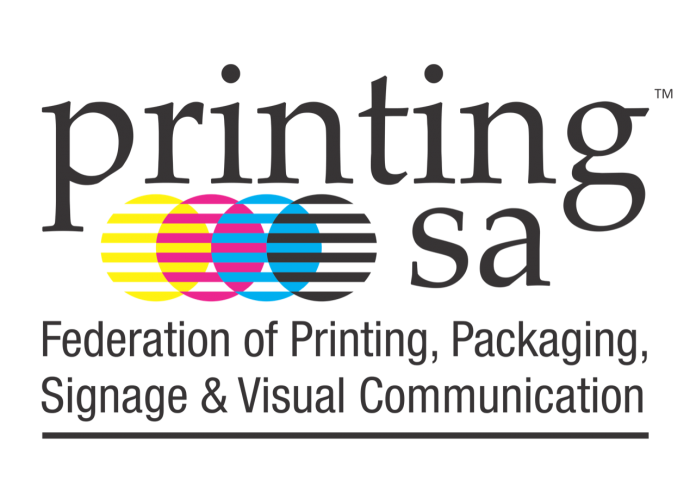Printing SA’s latest announcements include a message from the CEO discussing the progress made with the master plans in the print value chain, training courses and more.
Master plans for the print industry value chain
According to Dr Abdool Majid Mahomed, CEO of Printing SA, a master plan is a comprehensive plan of action and is used as a tool to define coordinated activities (policies, programmes, etc.) that align with a common set of goals for industries (as determined by stakeholders). It relies on empirical evidence to galvanise stakeholders around a common understanding of challenges/opportunities, followed by the defining of a vision and the development of an action plan to address these challenges. The masterplan then ‘lives’ through the action plan – which is monitored and evaluated as part of a structured, institutionalised process.
Why are master plans required and how are they developed?
Masterplans facilitate investment across the value-chain, unlock job creation, deepen cross-sector linkages, encourage optimal industry growth and identify domestic, regional and global export opportunities.
A masterplan is developed by:
• Comprehensively reviewing the South African value chain’s present position and policies.
• Completing an industry Strengths, Weaknesses, Opportunities and Threats (SWOT) analysis, and drawing lessons from international successes.
• Developing policy and regulation recommendations for government.
• Proposing programmes for collective action (industry, government and labour).
Who facilitates master plans?
If the industry falls under the category of manufacturing, then the Department of Trade Industry and Competition (DTIC) is the responsible department, if under culture, then it is the Department of Sport, Arts and Culture (DSAC), if tourism then it is the Department of Tourism (DT), and if agri-processing or cannabis then it is the Department of Forestry, Fisheries and the Environment (DFFE), etc.
In many instances, the Department Of Small Business Development (DSBD) also gets involved, because small business makes a huge impact on growth and employment across all sectors and industries.
How does a master plan get developed?
A lead government department identifies a Sector Masterplan Working Group (with representatives from the private sector, government and labour) and various leads who kickstart the process. This process will include identifying an Industry Reference Group, an Executive Oversight Committee, identification of an appropriate Service Provider and their appointment, and then developing a roadmap having key milestones to be achieved. It takes from one to five years for a plan to be developed and implemented. The targets set can be a long-term time frame of 10 to 20 years ahead.
Progress on each master plan is reviewed regularly by the Presidency’s office. Over 20 master plans are currently underway, and about five are completed and in their implementation phase.
Master plans impact positively on job creation and growth of the sector in general. Government’s policies are attuned to ensure they drive the attainment of the targets set, resulting in a win-win for all stakeholders.
What progress has been made with the master plans in the print value chain?
The Creative sector master plan project began about three years ago, consisting of four subsectors:
1. Music and Performing Arts.
2. Publishing and Printed Media.
3. Audiovisual and Interactive Media.
4. Visual Arts, and Craft and Design.
This master plan is managed by DSAC and DSBD, and is now in its final stages, reviewing the skills shortages and specific training programmes that need to be developed/rolled out. Printing SA has given input in the publishing (newspapers and magazines) and printed media (books) sub-plan, one of the four key sectors identified.
The Pharma sector master plan (headed the Pharma Desk of the DTIC) is now calling for companies to volunteer to serve on its various sub-committees. This opportunity will be of interest to packaging companies manufacturing pharmaceutical packaging and inserts. Printing SA’s communication to members asked for volunteers to come forward and make a meaningful impact to this plan through active engagement.
Dr Mahomed said that while both of the above master plans address some aspects of the full value chain of print, Printing SA feels strongly that there is a need for a more comprehensive plan, including all kinds of printing (not only publishing), packaging, signage and the visual communications sectors.
The print value chain master plan was first mooted to the DTIC on 3 September 2021, and Printing SA were then asked to present to the Steering Committee at the National Priority Sectors Master Plans Meeting, that is coordinated by the Presidency’s office, on 28 October 2021. There was an agreement in principle that the need for this master plan was well founded, and both the DTIC and DSBD were instructed to set up the first meeting with key stakeholders, government, private sector, the unions and Printing SA as an industry association, which has not occurred to date.
The way forward
Printing SA are currently seeking advice on how to proceed on this, with engagements with the Presidency’s office and Minister Patel’s office being pursued.
Training courses
– Retouching and colour correction. Registration closes 15 April. Find out more.
– Colour management E-Learning. Registration closes 22 April. Find out more.
– Sheetfed lithographers programme. Registration closes 29 April. Find out more.
Printing SA’s 2022 Training Course Prospectus is available. The prospectus covers the training courses they are hosting next year and will prove invaluable when planning staff training or self-improvement. Download the prospectus.
PRINTING SA
+27 11 287 1160
info@printingsa.org
http://www.printingsa.org





















